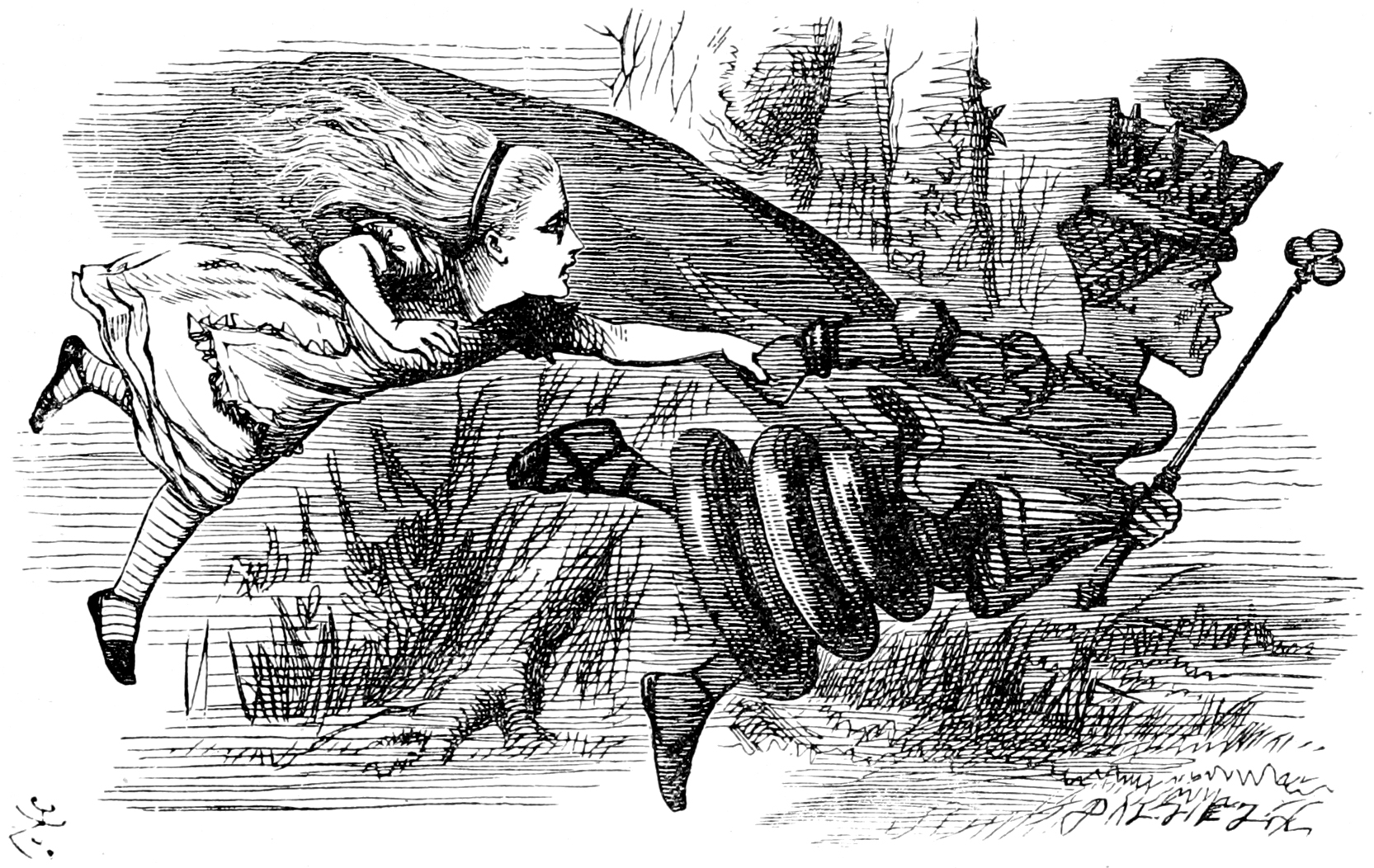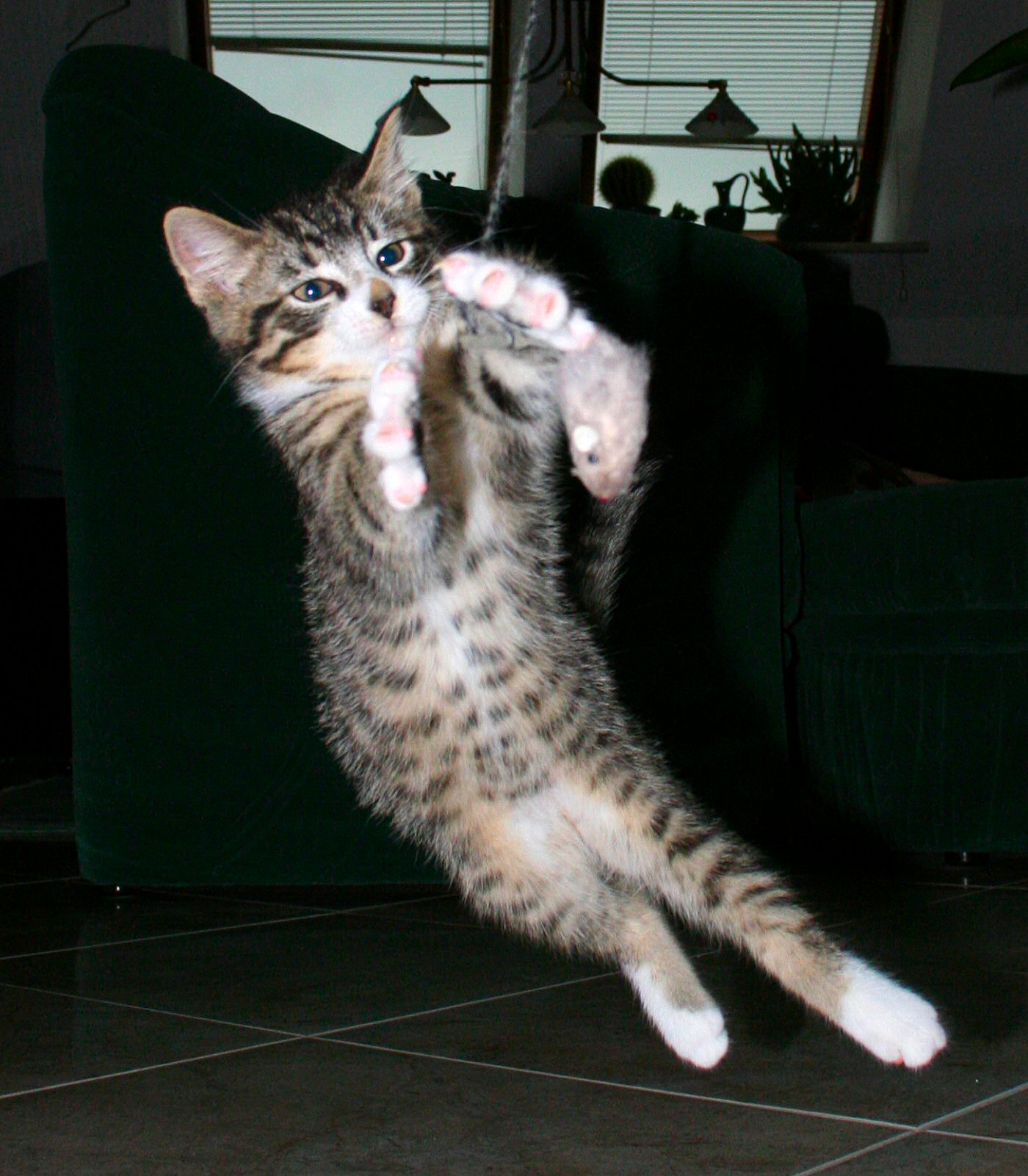|
Cat-and-mouse Game
Cat and mouse, often expressed as cat-and-mouse game, is an English-language idiom that means "a contrived action involving constant pursuit, near captures, and repeated escapes." The "cat" is unable to secure a definitive victory over the "mouse", who, despite not being able to defeat the cat, is able to avoid capture. In extreme cases, the idiom may imply that the contest is never-ending. The term is derived from the hunting behavior of domestic cats, which often appear to "play" with prey by releasing it after capture. This behavior may arise from an instinctive imperative to ensure that the prey is weak enough to be killed without endangering the cat. In colloquial usage, it has often been generalized to mean the advantage constantly shifts between the contestants, leading to an impasse or ''de facto'' stalemate. In classical game theory, cat and mouse classifies as a "copycat" archetype whereby there exists no equilibrium, and most importantly, no endgame, its two protagon ... [...More Info...] [...Related Items...] OR: [Wikipedia] [Google] [Baidu] |
Idiom
An idiom is a phrase or expression that typically presents a figurative, non-literal meaning attached to the phrase; but some phrases become figurative idioms while retaining the literal meaning of the phrase. Categorized as formulaic language, an idiom's figurative meaning is different from the literal meaning. Idioms occur frequently in all languages; in English alone there are an estimated twenty-five million idiomatic expressions. Derivations Many idiomatic expressions were meant literally in their original use, but sometimes the attribution of the literal meaning changed and the phrase itself grew away from its original roots—typically leading to a folk etymology. For instance, the phrase "spill the beans" (meaning to reveal a secret) is first attested in 1919, but has been said to originate from an ancient method of voting by depositing beans in jars, which could be spilled, prematurely revealing the results. Other idioms are deliberately figurative. For example, "break ... [...More Info...] [...Related Items...] OR: [Wikipedia] [Google] [Baidu] |
Passive Strategy
Passive may refer to: * Passive voice, a grammatical voice common in many languages, see also Pseudopassive * Passive language, a language from which an interpreter works * Passivity (behavior), the condition of submitting to the influence of one's superior * Passive-aggressive behavior, resistance to following through with expectations in interpersonal or occupational situations * Passive income, income resulting from cash flow received on a regular basis * Passive immunity, the transfer of active humoral immunity * Passive experience, observation lacking recipricol interaction; and wrought with delusion of control. Science and technology * Passivation (chemistry), process of making a material "passive" in relation to another material prior to using the materials together * Passivity (engineering) a property of engineering systems, particularly in analog electronics and control systems * Passive solar building design, which uses (or avoids) sunlight as an energy source without a ... [...More Info...] [...Related Items...] OR: [Wikipedia] [Google] [Baidu] |
Arms Race
An arms race occurs when two or more groups compete in military superiority. It consists of a competition between two or more states to have superior armed forces; a competition concerning production of weapons, the growth of a military, and the aim of superior military technology, the term is also used to describe any long-term escalating competitive situation where each competitor or competitive group focuses on out-doing others. Unlike a sporting race, which constitutes a specific event with winning interpretable as the outcome of a singular project, arms races constitute spiralling systems of on-going and potentially open-ended behavior. The existing scholarly literature is divided as to whether arms races correlate with war. International-relations scholars explain arms races in terms of the security dilemma, rationalist spiral models, states with revisionist aims, and deterrence models. Examples Pre-First World War naval arms race From 1897 to 1914, a nav ... [...More Info...] [...Related Items...] OR: [Wikipedia] [Google] [Baidu] |
Red Queen's Race
The Red Queen's race is an incident that appears in Lewis Carroll's ''Through the Looking-Glass'' and involves both the Red Queen, a representation of a Queen in chess, and Alice constantly running but remaining in the same spot. "Well, in our country," said Alice, still panting a little, "you'd generally get to somewhere else—if you run very fast for a long time, as we've been doing." "A slow sort of country!" said the Queen. "Now, here, you see, it takes all the running you can do, to keep in the same place. If you want to get somewhere else, you must run at least twice as fast as that!" The Red Queen's race is often used to illustrate similar situations: * In evolutionary biology, to illustrate that sexual reproduction and the resulting genetic recombination may be just enough to allow individuals of a certain species to adapt to changes in their environment—see Red Queen hypothesis. * As an illustration of the relativistic effect that nothing can ever reach the spee ... [...More Info...] [...Related Items...] OR: [Wikipedia] [Google] [Baidu] |
Tom And Jerry
''Tom and Jerry'' is an American Animated cartoon, animated media franchise and series of comedy short films created in 1940 by William Hanna and Joseph Barbera. Best known for its 161 theatrical short films by Metro-Goldwyn-Mayer, the series centers on the rivalry between the titular characters of a cat named Tom Cat, Tom and a mouse named Jerry Mouse, Jerry. Many shorts also feature several List of Tom and Jerry characters#Recurring characters, recurring characters. In its original run, Hanna and Barbera produced 114 ''Tom and Jerry'' shorts for MGM from 1940 to 1958. During this time, they won seven Academy Award for Best Animated Short Film, Academy Awards for Best Animated Short Film, tying for first place with Walt Disney's ''Silly Symphonies'' with the most awards in the category. After the Metro-Goldwyn-Mayer cartoon studio, MGM cartoon studio closed in 1957, MGM revived the series with Gene Deitch directing an additional 13 ''Tom and Jerry'' shorts for Rembrandt Films f ... [...More Info...] [...Related Items...] OR: [Wikipedia] [Google] [Baidu] |
Cat And Mouse In Partnership
"Cat and Mouse in Partnership" (german: Katze und Maus in Gesellschaft) is a German fairy tale collected by the Brothers Grimm in ''Grimms' Fairy Tales'' (KHM 2). It is a story of Aarne-Thompson type 15 ("Stealing the Partner's Butter"). Origin A shorter version of the tale was included in the Brothers Grimm's manuscript collection of 1808, and published in the first edition of ''Kinder- und Hausmärchen'' in 1812. Their version is based upon an oral tradition communicated by Gretchen Wild (1787–1819) in Kassel Kassel (; in Germany, spelled Cassel until 1926) is a city on the Fulda River in northern Hesse, Germany. It is the administrative seat of the Regierungsbezirk Kassel and the district of the same name and had 201,048 inhabitants in December 2020 .... Plot A cat and a mouse, contrary to the custom of their kinds, become friends, such good friends that they decide to share a home. That they might have something to fall back on in time of need, they buy a pot of fat a ... [...More Info...] [...Related Items...] OR: [Wikipedia] [Google] [Baidu] |
Cat Play And Toys
Cat play and toys incorporates predatory games of "play aggression". Cats' behaviors when playing are similar to hunting behaviors. These activities allow kittens and younger cats to grow and acquire cognitive and motor skills, and to socialize with other cats. Cat play behavior can be either solitary (with toys or other objects) or social (with animals and people). They can play with a multitude of toys ranging from strings, to small furry toys resembling prey (e.g. mice), to plastic bags. Defining object play Object play for cats is the use of inanimate objects by the animal to express play behaviour. In the case of pet domestic cats, humans normally provide them with purchased, human-made toys such as toy mice, bird or feather toys, or toy insects. These may be suspended from a string attached to a wooden or fishing-style rod designed to simulate lifelike activity in the toy, triggering the cat's predatory insticts – this game is known as catfishing. Cat play can be enric ... [...More Info...] [...Related Items...] OR: [Wikipedia] [Google] [Baidu] |
Hide-and-seek
Hide-and-seek (sometimes known as hide-and-go-seek) is a popular children's game in which at least two players (usually at least three) conceal themselves in a set environment, to be found by one or more seekers. The game is played by one chosen player (designated as being "it") counting to a predetermined number with eyes closed while the other players hide. After reaching this number, the player who is "it" calls "Ready or not, here I come!" or "Coming, ready or not!" and then attempts to locate all concealed players. The game can end in one of several ways. The most common way of ending is the player chosen as "it" locates all players; the player found first is the loser and is chosen to be "it" in the next game. The player found last is the winner. Another common variation has the seeker counting at "home base"; the hiders can either remain hidden or they can come out of hiding to race to home base; once they touch it, they are "safe" and cannot be tagged. The game is an ex ... [...More Info...] [...Related Items...] OR: [Wikipedia] [Google] [Baidu] |
Moral
A moral (from Latin ''morālis'') is a message that is conveyed or a lesson to be learned from a story or event. The moral may be left to the hearer, reader, or viewer to determine for themselves, or may be explicitly encapsulated in a maxim. A moral is a lesson in a story or in real life. Finding morals As an example of an explicit maxim, at the end of Aesop's fable of the Tortoise and the Hare, in which the plodding and determined tortoise won a race against the much-faster yet extremely arrogant hare, the stated moral is "slow and steady wins the race". However, other morals can often be taken from the story itself; for instance, that arrogance or overconfidence in one's abilities may lead to failure or the loss of an event, race, or contest. The use of stock characters is a means of conveying the moral of the story by eliminating complexity of personality and depicting the issues arising in the interplay between the characters, enabling the writer to generate a clear message ... [...More Info...] [...Related Items...] OR: [Wikipedia] [Google] [Baidu] |
Merriam-Webster
Merriam-Webster, Inc. is an American company that publishes reference books and is especially known for its dictionaries. It is the oldest dictionary publisher in the United States. In 1831, George and Charles Merriam founded the company as G & C Merriam Co. in Springfield, Massachusetts. In 1843, after Noah Webster died, the company bought the rights to ''An American Dictionary of the English Language'' from Webster's estate. All Merriam-Webster dictionaries trace their lineage to this source. In 1964, Encyclopædia Britannica, Inc. acquired Merriam-Webster, Inc. as a subsidiary. The company adopted its current name in 1982. History Noah Webster In 1806, Webster published his first dictionary, ''A Compendious Dictionary of the English Language''. In 1807 Webster started two decades of intensive work to expand his publication into a fully comprehensive dictionary, ''An American Dictionary of the English Language''. To help him trace the etymology of words, Webster learned ... [...More Info...] [...Related Items...] OR: [Wikipedia] [Google] [Baidu] |





